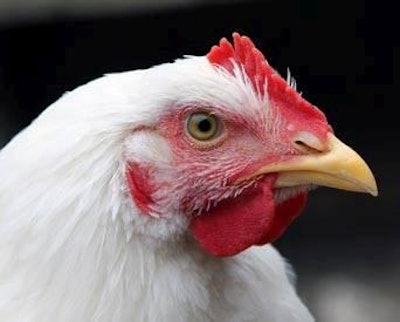
While there may now be some light on the horizon, the Republic of Ireland’s poultry industry has been hit particularly hard over recent years, registering little or no profit since the start of the economic crisis in 2007-08.
The number of birds produced in Ireland contracted by 12 percent last year, and the slide continued over the first six months of this year, with output shrinking by a further 7 percent.
Like producers in other countries, Irish chicken producers were hit by high feed prices. However, with feed prices now significantly lower, the outlook for the industry, according to Department of Agriculture, Food and the Marine, is now thought to be “stable.”
Of all European Union Member States, the Republic of Ireland’s economy is among those to have suffered the most since the start of the recession. Irish economic output has fallen by 21 percent since the start of the recession and unemployment increased from 5 to 15 percent.
This crisis was compounded by the fact that Ireland’s economy is among the most rural in Europe, with more than 50 percent of the population living in the countryside and so having fewer opportunities to diversify.
Fewer producers
Over the past few years, pressure on farmers and processors alike has led to several farms and plants closing.
There are now only seven companies processing poultry in the Irish Republic, with Carton Brothers processing just over half the country’s birds. Its County Cavan plant, said to be one of the most modern in Europe, produces 600,000 birds per week.
High energy costs, a turbulent domestic market, and growing imports have all contributed to broiler producers’ difficulties, making chicken production less attractive.
With the rationalization at processing level, some farmers have found the distance to the plant too great for their business to remain viable. Others have been unable to win contracts with companies that continue to operate. Additionally, some farmers have reached retirement age with nobody to take on their farms.
Impact of feed prices
As in other countries, high feed prices have played their part in the performance of the Irish poultry industry, but over the past 12 months no broiler producer is thought to have gone out of business due to high costs.
To a certain extent, Irish broiler producers are protected from rising feed prices, via agreements with feed manufacturers, meaning that any fluctuation in input costs must be absorbed by the feed producer.
Production, consumption
In 2013, domestic poultry production fell by 12 percent to 77.5 million birds, and this contraction continued into 2014. Over the first half of this year, production fell by 7 percent, compared to the same period in 2013.
The value of poultry sales in Ireland, however, increased slightly last year, to stand at EUR186 million (US$249 million).
In 2013, poultry meat accounted for 30 percent of all meat consumed in Ireland, with annual per capita consumption standing at 25.7 kg. Although this was down slightly on the year before, consumption is now rising again as poultry meat is an economical option with prices standing at 76 percent of the average meat price, reports Peter Duggan of Bord Bia.
But this increase in consumption is not necessarily of home-produced poultry meat. Over the first 5 months of 2014, imports of poultry meat rose by 13 percent compared to the same period last year, to 156,000 tons compared with the corresponding period of 2013.
According to Peter Duggan, of Bord Bia, the volume of chicken meat purchased by consumers over the 12 months to June this year rose by 7 percent, and consumers are now buying poultry more frequently, and buying larger amounts.
Exports
There has been positive news, however, for Irish poultry producers on the export front over the past couple of years.
More than half of production by value is exported. In 2013, exports grew by 6 percent to stand at EUR234.3 million. This increase was driven by higher demand for processed products in particular.
The U.K. remains the main export market for Irish poultry products, accounting for 83 percent of the total. While there may have been a recent decline in U.K. demand for fresh and frozen products, this has been offset by greater demand for processed products.
During the first quarter of 2014, demand from the U.K. picked up strongly, and total poultry exports to the U.K. rose by 55 percent to EUR67 million. Again, this sharp increase was predominantly driven by increased processed exports which rose by 66 percent.
A similar pattern has been recorded in the country’s exports to other markets during the first three months of 2014. In total, exports rose by 55 percent to EUR81.5 million, with demand from other EU member states increasing by 75 percent in comparison with the first quarter of 2013, to stand at EUR12.1 million. Irish exports outside of the EU stood at EUR2.1 million during the first quarter of this year.

















